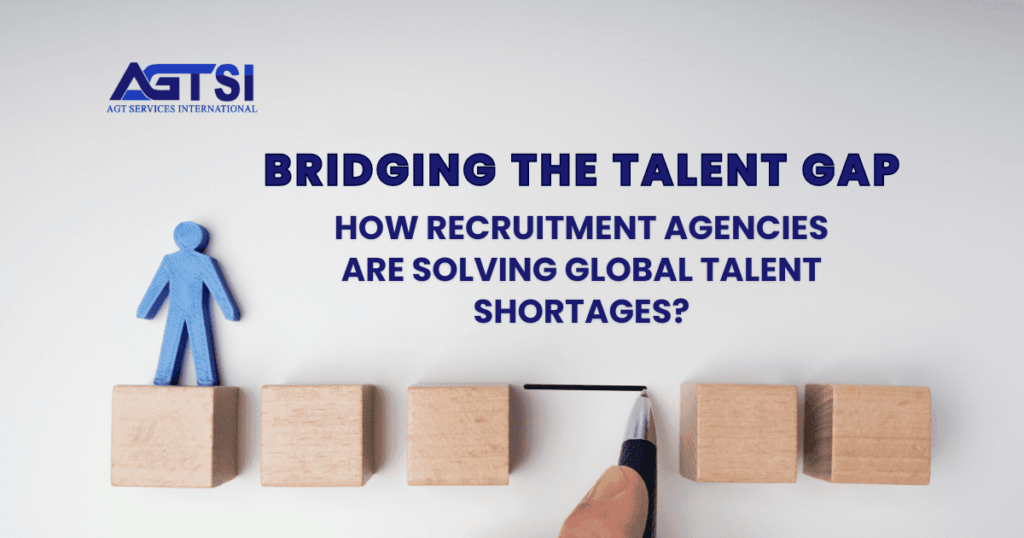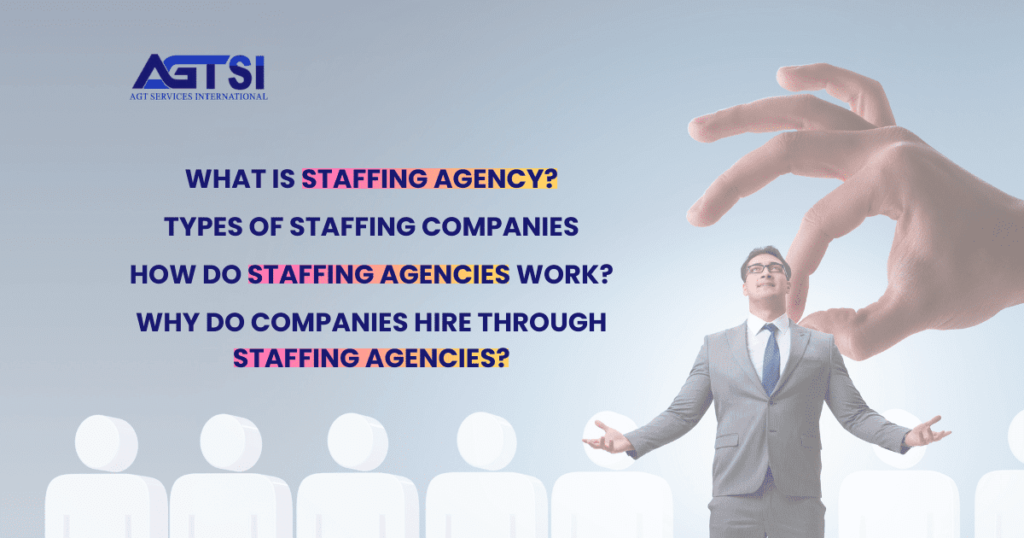Introduction
Global talent shortages have become a pressing challenge for businesses worldwide. The demand for skilled professionals is greater than the available talent pool, leading to recruitment difficulties and frustrating organizational growth. In this comprehensive guide, we’ll explore how recruitment agencies are addressing the global talent shortage by using innovative strategies and technology.
Understanding the Global Talent Shortage
In 2024, many companies are facing a big problem called the global talent shortage. Worldwide talent scarcity means that about 77% of these companies are still looking for people to fill their job openings, especially in areas like IT and data jobs. In the US, the lack of workers is at 75%, showing that this is a big issue for businesses everywhere. In Europe, the construction industry is the job that’s in demand the most, showing that different places have different needs for workers.
Over time, the number of jobs that need workers has been going up, which shows that this problem is going to be around for a while. Some places like Taiwan, Germany, and Hong Kong have even higher rates of needing more workers. This lack of skilled workers is a big deal, with some places like Saudi Arabia expected to lose a lot of money because they need help finding enough workers. These numbers show that we need new ideas and intelligent plans to fix this talent shortage and help businesses keep growing. Information Source
Recommended: Manpower Recruitment for Malaysia
Strategies for Recruitment Agencies to Tackle Talent Shortages
In a world where talent scarcity is a general challenge, recruitment agencies play a vital role in bridging the gap between skilled professionals and organizations in need. To tackle talent shortages effectively, recruitment agencies can employ a range of strategic approaches across different stages of the talent lifecycle. Let’s delve into some extensive strategies and techniques that recruitment agencies can use to address talent shortages effectively.
1. Building a Strong Employer Brand
A. Showcasing Value Proposition
Highlighting the unique value proposition of client organizations to attract top talent.
B. Cultural Showcase
Highlighting organizational culture, purpose, and impact to resonate with potential candidates.
C. Using Multiple Channels
Utilizing a combination of platforms like social media, job boards, referrals, and events to access a diverse range of potential candidates.
D. Competitive Salary
Offering competitive and flexible wages and benefits packages that match market standards and candidate expectations.
Recommended: Manpower Recruitment Agency for Qatar
2. Optimizing Talent Acquisition
Recruitment agencies have adapted their strategies to attract and retain diverse talent from around the world. They prioritize sourcing candidates with a range of skill sets and perspectives, fostering inclusivity and meeting their clients’ specific needs. Additionally, agencies employ strict skills examination processes, considering technical and soft skills to ensure suitable candidates for each role.
A. Streamlining Hiring Processes
Executing smooth and efficient hiring processes to improve candidate experience.
B. Data-Driven Assessment
Using data-driven methods and tools for objective assessment of candidates’ skills and fit.
C. Diversifying Hiring Channels
Expanding recruitment pipelines by tapping into underrepresented or overlooked groups and promoting variety and inclusivity.
Recommended: Manpower Recruitment Agency in UAE
3. Investing in Talent Development
Acknowledging that the scarcity of skilled professionals isn’t just about hiring but also about nurturing talent, recruitment firms are dedicating resources to enhance skill levels. They offer training programs and growth avenues to potential hires, equipping them with sought-after abilities and filling skill deficiencies. By fostering the enhancement of candidates’ skill sets, recruitment agencies bolster the general talent reservoir, thereby improving organizations’ capability to discover fitting candidates.
A. Learning and Development Programs
These programs provide training and development opportunities to candidates, address skill gaps, and enhance capabilities.
B. Continuous Learning Culture
Promoting a culture of constant learning and feedback to promote ongoing skill enhancement and knowledge sharing.
C. Real-World Application
Offering opportunities for candidates to apply what applicants have learned in practical scenarios through projects, assignments, and mentorship programs.
Recommended: Manpower Recruitment Agency for Oman
4. Enhancing Talent Retention
A. Recognition and Rewards
Recognizing and rewarding employee contributions to boost satisfaction and motivation.
B. Empowerment and Autonomy
Providing autonomy and empowerment to employees, promoting a sense of ownership and engagement.
C. Career Advancement
Offering career advancement and mobility options to encourage growth and exploration within or outside the organization.
D. Transparent Communication
Establish transparent communication channels and seek regular feedback from employees on crucial decisions.
Recommended: Manpower Recruitment Agency in Bahrain
5. Facilitating Talent Redeployment
A. Skills Anticipation and Matchmaking
Identifying future skills needs and matching potential hires with existing talent pools to effectively redeploy.
B. Guidance and Support
Providing guidance, training, and support to facilitate smooth changes between roles or functions.
C. Internal Collaboration Platforms
Internal platforms and networks play a crucial role in enabling talent mobility and fostering collaboration among teams, departments, or locations.
Recommended: Manpower Recruitment for Korea
6. Leveraging Technology Solutions
A, Applicant Tracking Systems (ATS)
Using ATS to automate and optimize talent acquisition processes, improving efficiency and accuracy.
B Artificial Intelligence (AI)
AI can be used for candidate matching, skills assessment, and data-driven analytics to improve decision-making.
C. Data-Driven Insights
Leveraging data analytics to acquire valuable insights into talent trends, refine strategies, and arrive at well-informed decisions regarding talent management.
Recommended: Manpower Recruitment for Portugal
7. Adapting to Industry-Specific Challenges
Operating in a global talent landscape comes with regulatory and compliance challenges. Recruitment agencies, such as AGT Services International, have extensive expertise in navigating dissimilar regulations, taxes, and labour laws across different countries. They offer centralized digital payroll systems integrated with global HR information systems (HRIS), ensuring compliance and efficiency in talent management.
A. Sectoral Focus
Matching strategies to address specific talent shortages overall in high-demand sectors such as IT, healthcare, finance, and engineering.
B. Regional Dynamics
Understanding regional variations in talent scarcity and customizing approaches accordingly to maximize impact.
C. Collaborative Partnerships
Forming strategic partnerships with educational institutions, industry bodies, and government agencies to address skill gaps and promote talent development initiatives.
Recommended: Manpower Recruitment for Germany
8. Overcoming Geographic Barriers with Remote Work
The emergence of remote work has unlocked fresh avenues for tackling talent deficits. Recruitment agencies facilitate the adoption of distributed workforces, where employees work remotely from various locations worldwide. This approach aids companies in accessing a diverse talent pool worldwide, unrestricted by geographical boundaries. Employees appreciate the freedom that comes with remote work, resulting in increased satisfaction and retention levels within the workforce.
9. The Future of Talent Acquisition
As the demand for skilled professionals continues to grow, recruitment agencies will continue to evolve and innovate. They will leverage advanced technologies, such as AI-driven tools and predictive analytics, to make data-driven hiring decisions. Additionally, agencies will focus on employer branding and employee experience, ensuring that candidates are attracted to and retained by organizations.
Recommended: Manpower Recruitment for Romania
10. Building a Diverse and Inclusive Workforce
Diversity and inclusion are key priorities for recruitment agencies. They actively promote diversity in hiring practices, creating inclusive work environments where employees from diverse backgrounds thrive. This diversity not only enhances innovation and creativity but also reflects the evolving demographics of the workforce.
Global Talent Management Challenges
Global talent management comes with its fair share of challenges, reflecting the complex nature of operating in a globalized economy and workforce. Here are some key challenges faced in global talent management:
A. Cultural Differences
Managing a diverse workforce across different countries and cultures requires a deep understanding of cultural nuances, communication styles, and work preferences. What works in one culture may not be effective in another, making it essential to tailor talent management strategies accordingly.
B. Recruitment and Retention
Finding and retaining top talent on a global scale can be challenging due to competition, varying labour laws, and differing expectations regarding compensation, benefits, and career development opportunities.
C. Language and Communication Barriers
Effective communication is crucial for collaboration and productivity. Language barriers, time zone differences, and cultural communication norms can hinder effective communication and lead to misunderstandings.
D. Legal and Compliance Issues
Adhering to labor laws, immigration regulations, and compliance standards in multiple countries adds complexity to talent management processes. Ensuring legal compliance while implementing global HR policies is a significant challenge.
Recommended: Manpower Recruitment for Poland
E. Skill Gaps and Training Needs
Bridging skill gaps and providing relevant training and development programs for a diverse workforce can be challenging. Identifying and addressing skill shortages across different regions require a strategic approach.
F. Global Mobility
Managing international assignments, expatriate placements, and cross-border transfers involves logistical, cultural, and administrative challenges. Ensuring a smooth transition for employees and their families is essential for successful global mobility programs.
G. Technology Integration
Leveraging technology for global talent management, including HRIS (Human Resource Information Systems), talent analytics, and remote work tools, requires seamless integration and data security measures across borders.
H. Succession Planning
Developing a pipeline of future leaders and ensuring smooth leadership transitions globally is a critical aspect of talent management. Identifying and nurturing high-potential talent across diverse geographies can be complex.
Recommended: Manpower Recruitment for Japan
I. Work-Life Balance
Balancing work-life considerations, such as flexible work arrangements, cultural holidays, and wellness programs, for a global workforce with diverse needs and expectations requires a holistic approach.
J. Adapting to Market Changes
Global talent management strategies must be agile and adaptable to changing market dynamics, economic conditions, geopolitical factors, and industry trends that impact talent acquisition, deployment, and retention strategies.
Final Thoughts
In conclusion, recruitment agencies are at the forefront of addressing global talent shortages by adapting strategies, leveraging technology, investing in talent development, and embracing remote work. By partnering with recruitment agencies, businesses can access a diverse talent pool, streamline their recruitment processes, and stay competitive in today’s dynamic market. As the talent landscape evolves, recruitment agencies will play an increasingly vital role in shaping the future of talent acquisition and management.




















